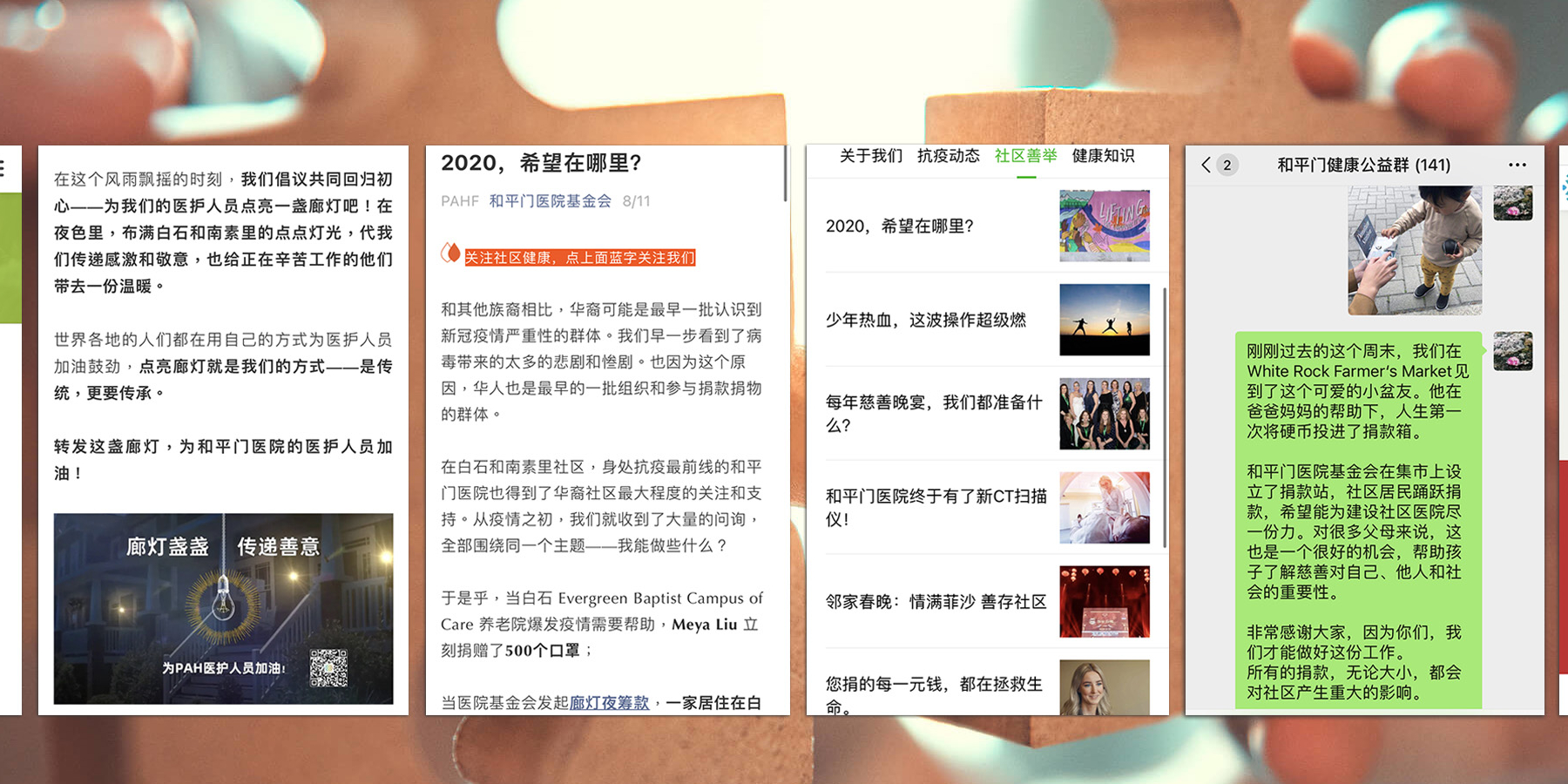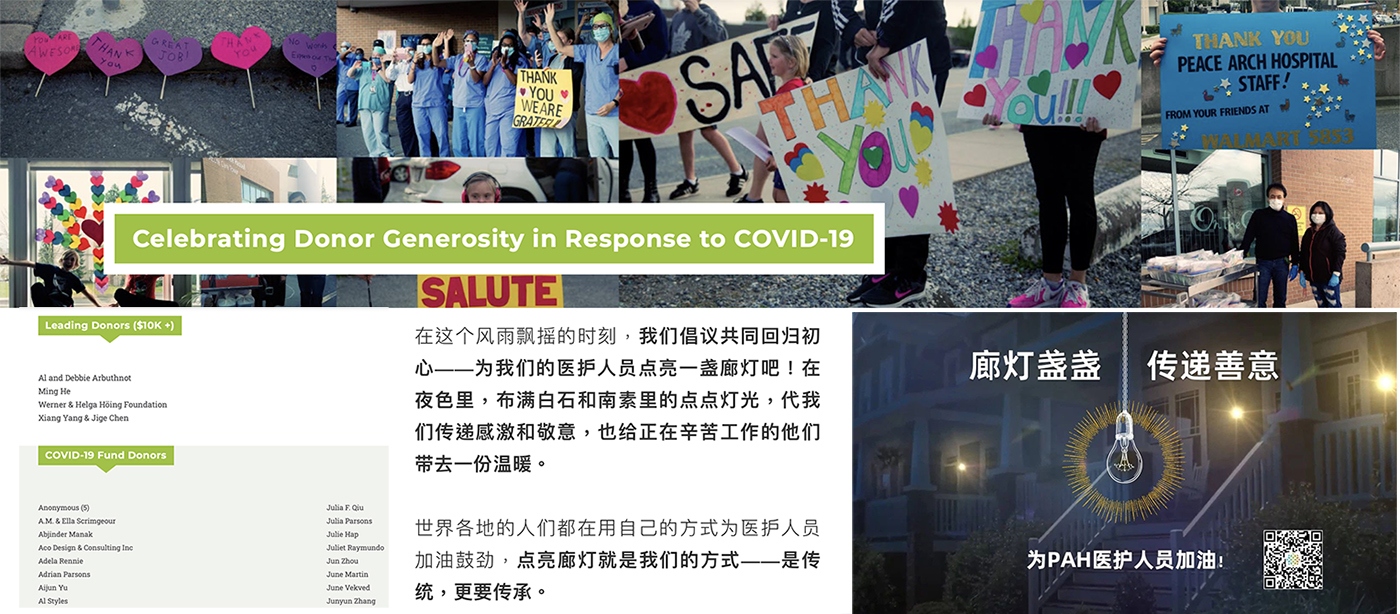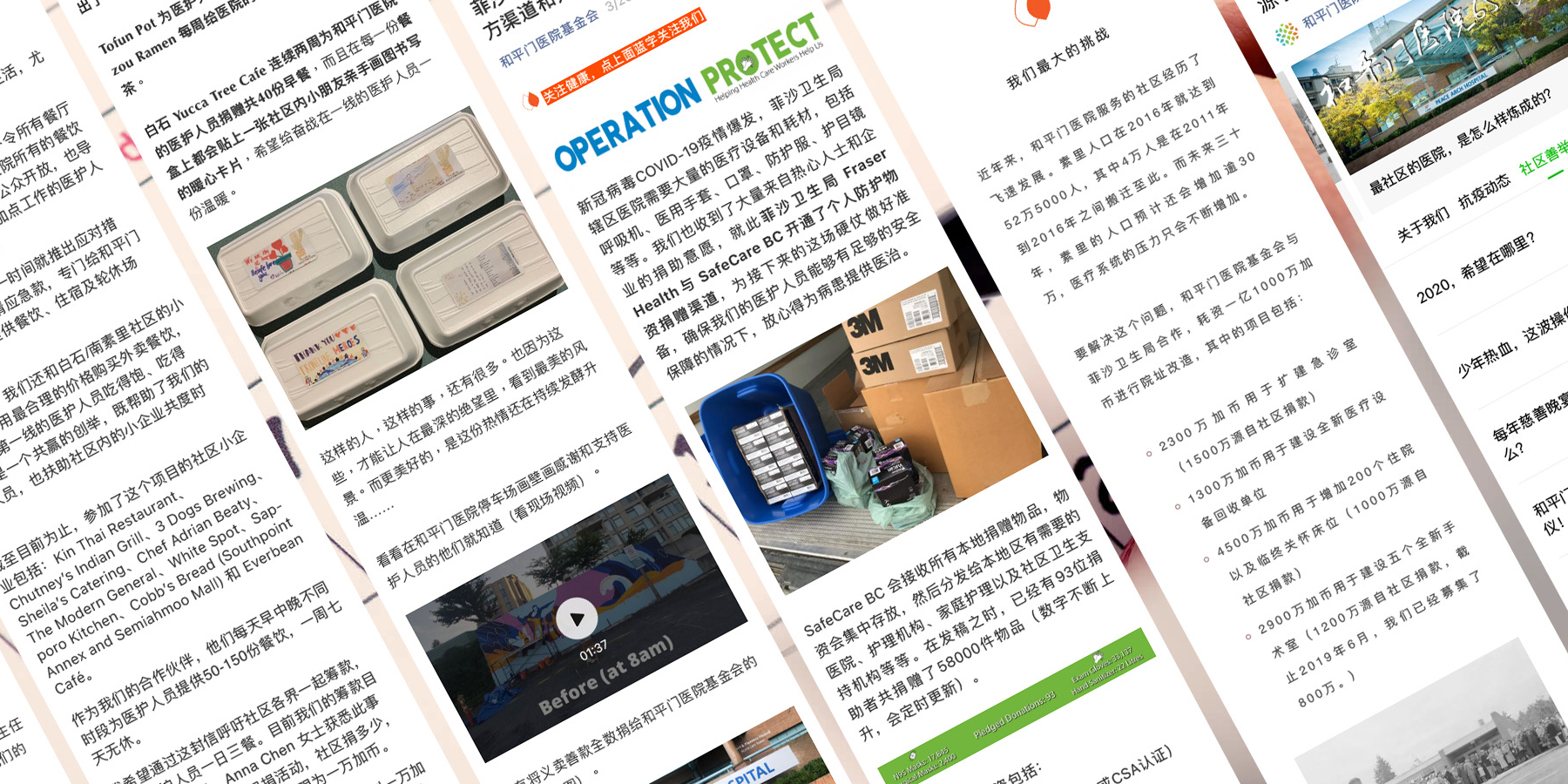Peace Arch Hospital Foundation (PAHF) faced a significant challenge in engaging the growing Mandarin-speaking community in White Rock/South Surrey for their hospital expansion fundraising. The need to build meaningful, sustained relationships and utilize effective communication channels was crucial.
Challenges
PAHF needed to build lasting relationships with the Mandarin-speaking community, a task complicated by previous one-off initiatives that hadn’t fostered sustained connections. Additionally, PAHF’s limited use of media and social platforms for Mandarin-speaking engagement presented a missed opportunity. Furthermore, there was a significant cultural gap to bridge, as previous strategies with PAHF’s traditional audience did not seamlessly translate to the Chinese community.
Solutions
Our solutions focused on a culturally sensitive outreach program, uniquely tailored for the Mandarin-speaking community in White Rock/South Surrey. We chose WeChat for its community-centric and trust-based environment, which is ideal for creating more personal and credible engagement. The plan included not only content dissemination but also the launch of a WeChat Volunteer group, designed to create a sense of community involvement and active participation. Alongside our digital strategy, we planned to integrate community events and media campaigns to broaden our reach and deepen the impact of our message.
Implementation
Our implementation strategy commenced with launching the WeChat Official Account, which rapidly attracted an impressive following of over 500 within the first few hours. This was quickly followed by the formation of a volunteer group on the platform, drawing in approximately 200 members almost immediately, a clear sign of the community’s eagerness for involvement. On WeChat, our approach centered around sharing content that was both relevant and impactful, emphasizing the vital role of individual contributions in enhancing healthcare services. In parallel, we initiated a series of community events and informative seminars, developed in partnership with local organizations. These events were instrumental in raising awareness about the essential role of PAHF and the critical need for hospital expansion. Alongside these community-focused efforts, we deployed strategic media campaigns, especially critical during the COVID-19 pandemic. These campaigns successfully magnified our outreach, rallied substantial community support, and were instrumental in driving noteworthy donations to support the cause.
Results
The results of our multifaceted approach were overwhelmingly positive and far exceeded expectations:
‣ Our WeChat content resonated with the audience, leading to weighted awareness and involvement. Notably, our followers donated everything that’s needed at the hospital, including masks and personal protective equipment.
‣ The rapid growth of our WeChat volunteer group marked a significant success, reading a strong foundation for community involvement. A group of young artists created an inspirational mural on the hospital’s exterior, aiming to boost the morale of its staff. Another group of volunteers organized fundraising sales and donated all the proceeds to the hospital.
‣ We collaborated with local Chinese restaurants to provide meals for medical staff.
‣ The community events and seminars we organized in collaboration with local entities further solidified the connection between PAHF and the Mandarin-speaking community, enhancing understanding and support for the hospital expansion project.
‣ Our targeted media campaigns during the pandemic were particularly effective, resulting in heightened community interest and substantial fundraising success. A notable highlight was our COVID-19 matching gift campaign, where we aimed to raise $20,000 but remarkably surpassed our goal, collecting over $100,000 in donations. This achievement not only reflected the financial success of our efforts but also demonstrated the power of community solidarity in times of crisis, significantly contributing to the healthcare system’s support.

Conclusion
This strategy not only met financial objectives but also fostered community unity and support, proving vital in responding to the healthcare challenges during the pandemic. Our approach demonstrated the effectiveness of targeted, culturally sensitive communication in community mobilization and resource coordination.



